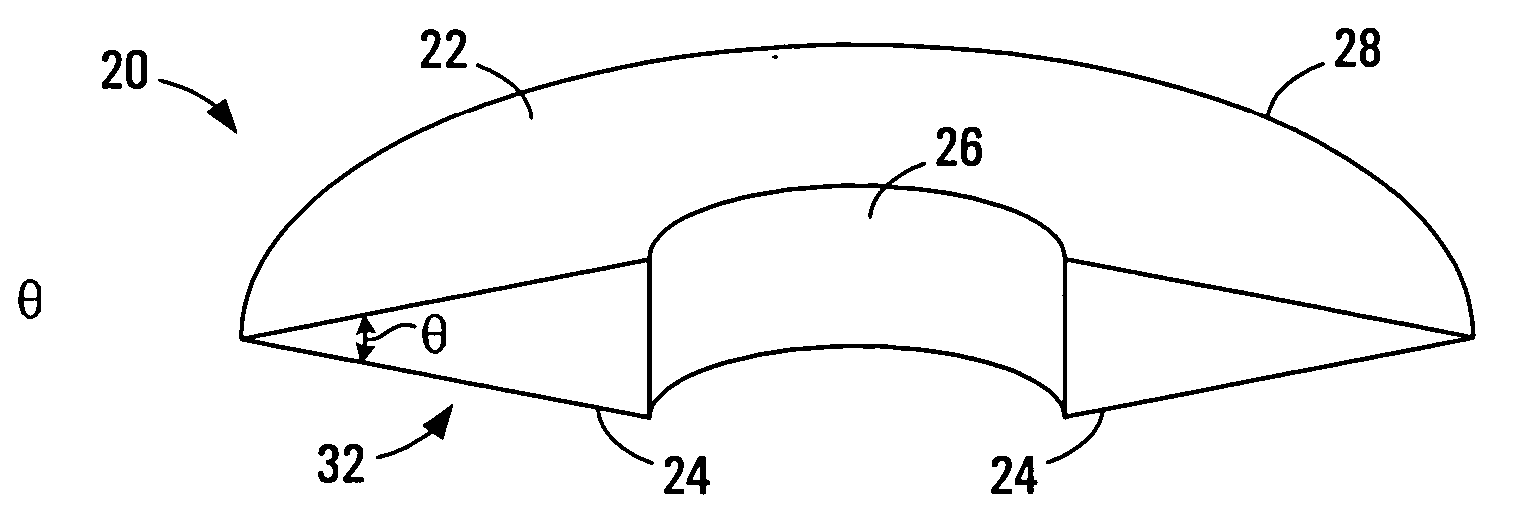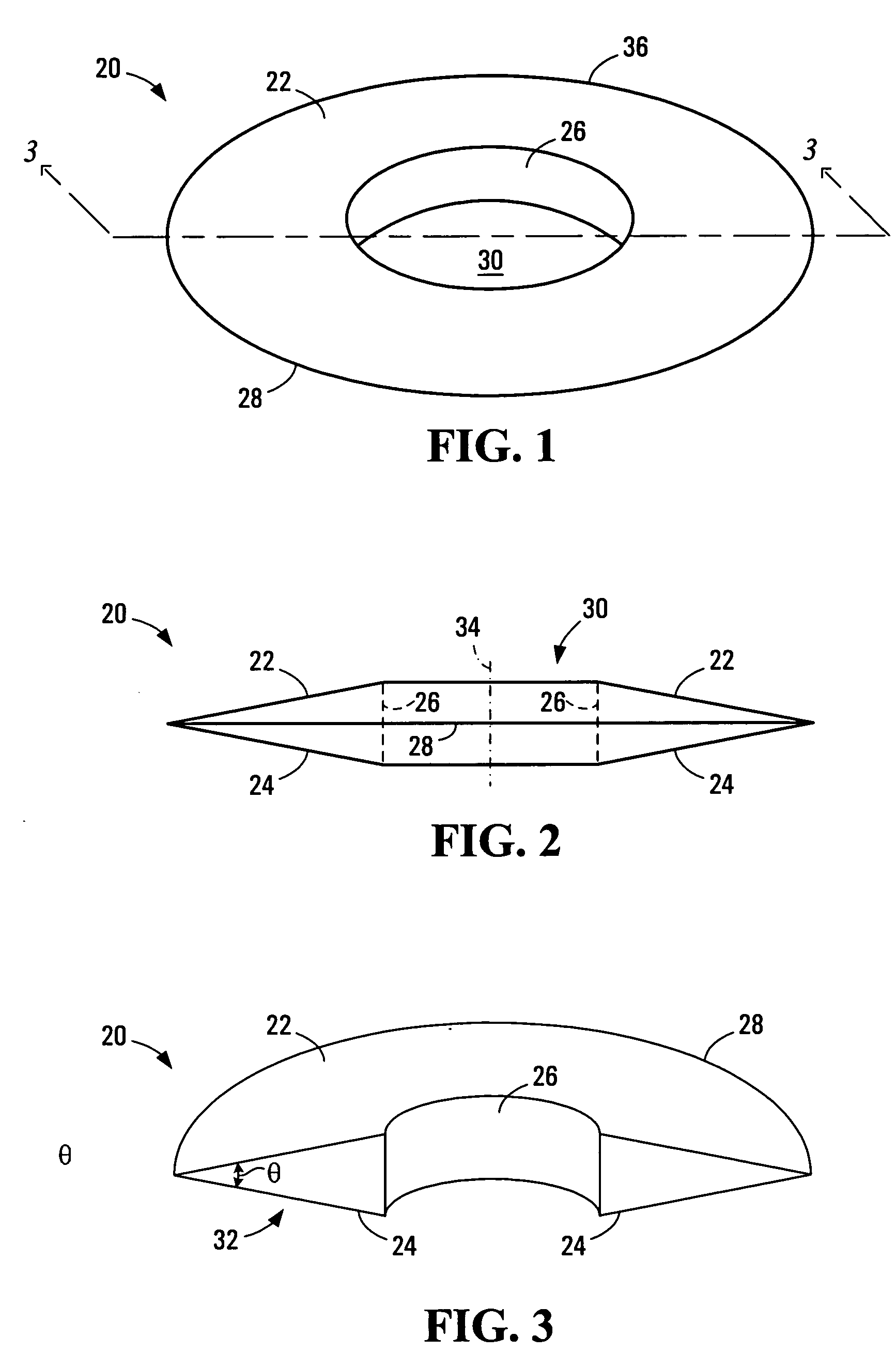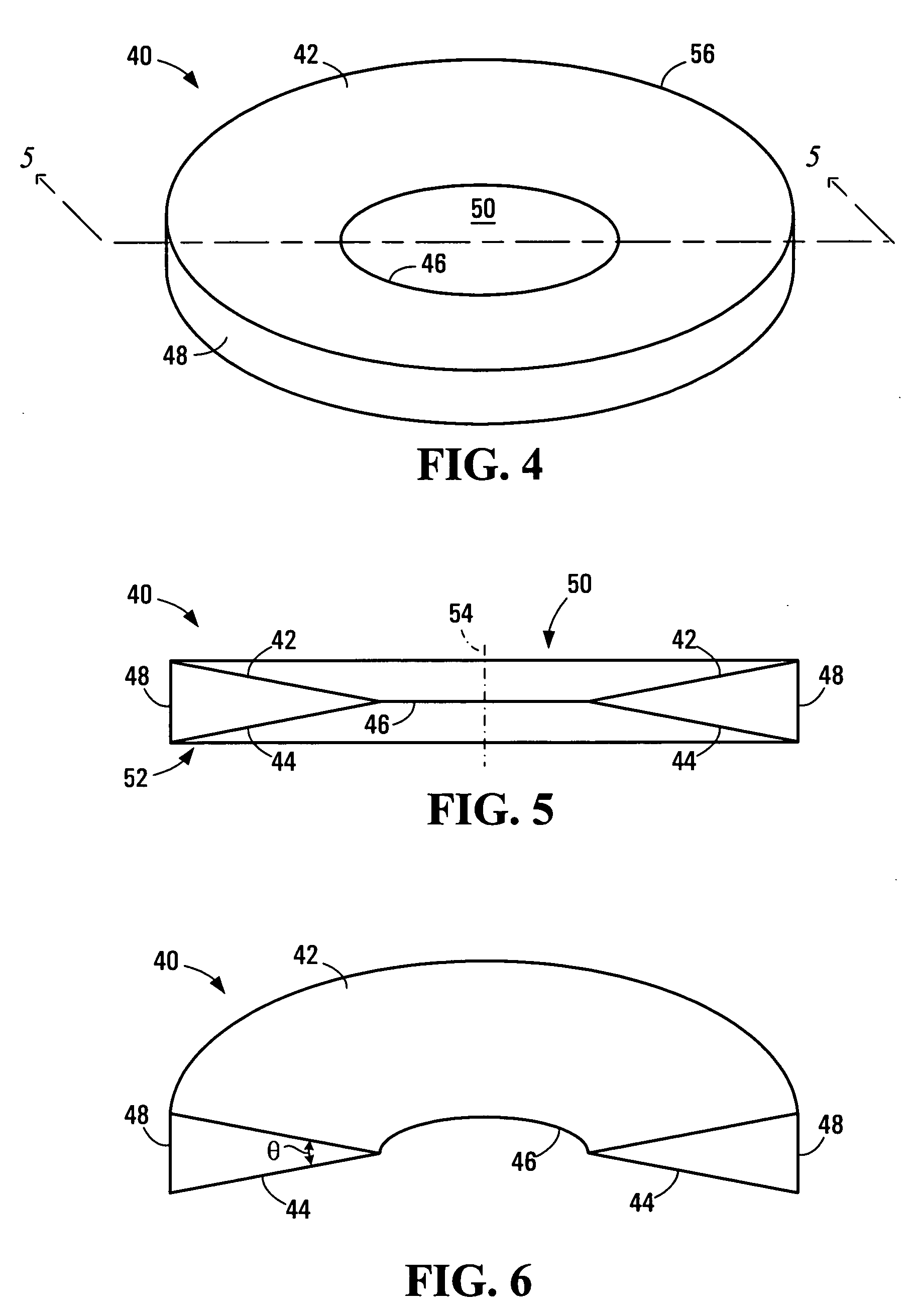Annular or penannular prism
a technology of annular prisms and prisms, applied in the field of lenses and prisms, can solve problems such as light convergen
- Summary
- Abstract
- Description
- Claims
- Application Information
AI Technical Summary
Benefits of technology
Problems solved by technology
Method used
Image
Examples
Embodiment Construction
[0026] Referring to FIGS. 1-3, an annular prism 20 exemplary of a first embodiment of the present invention is illustrated in perspective view, in side elevation view, and in cross sectional perspective respectively. Annular prism 20 is capable of causing light travelling parallel to principal axis 34 (FIG. 2—described below) to converge. Prism 20 may thus be referred to as a “converging annular prism”.
[0027] As illustrated, annular prism 20 comprises an annulus 36 of transparent material, such as glass or plastic, having a central aperture 30. The annulus 36 has a front surface 22, a rear surface 24, and a cylindrical inner surface 26. As best seen in FIGS. 2 and 3, annulus 36 tapers towards its outer periphery, with the front and rear surfaces 22 and 24 ultimately converging to form the outer circumference 28 of the annulus 36.
[0028] As shown in FIG. 3, a cross section of the annular prism 20 formed by a plane that contains the principal axis 34 of the annulus 36 yields a pair o...
PUM
 Login to View More
Login to View More Abstract
Description
Claims
Application Information
 Login to View More
Login to View More - R&D
- Intellectual Property
- Life Sciences
- Materials
- Tech Scout
- Unparalleled Data Quality
- Higher Quality Content
- 60% Fewer Hallucinations
Browse by: Latest US Patents, China's latest patents, Technical Efficacy Thesaurus, Application Domain, Technology Topic, Popular Technical Reports.
© 2025 PatSnap. All rights reserved.Legal|Privacy policy|Modern Slavery Act Transparency Statement|Sitemap|About US| Contact US: help@patsnap.com



